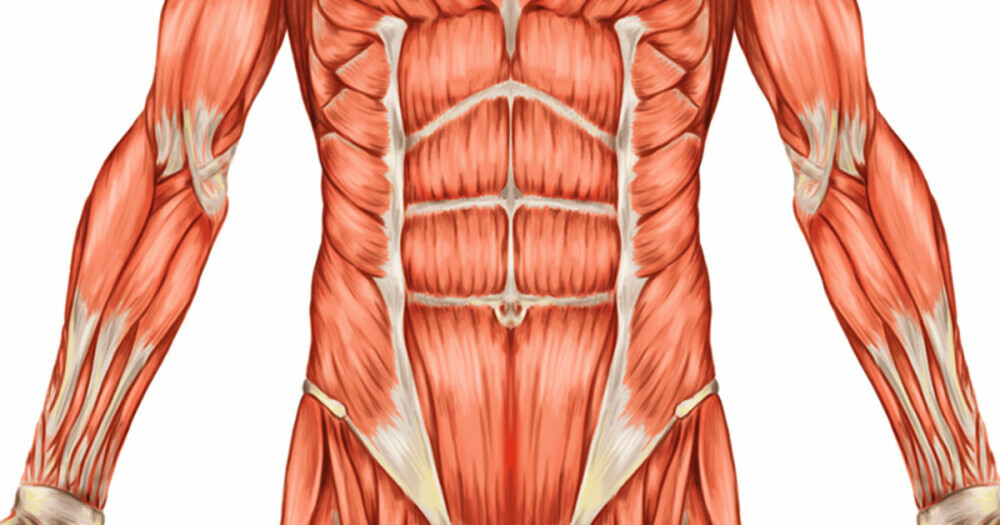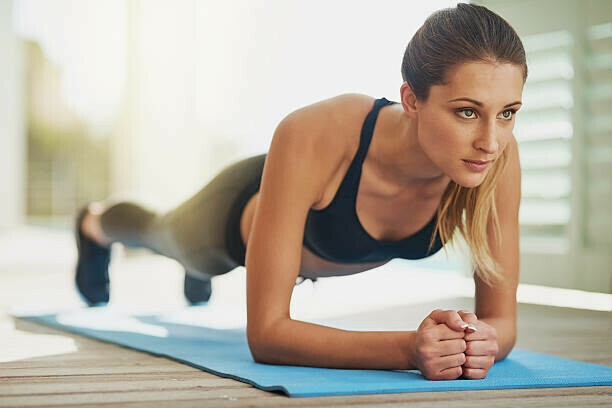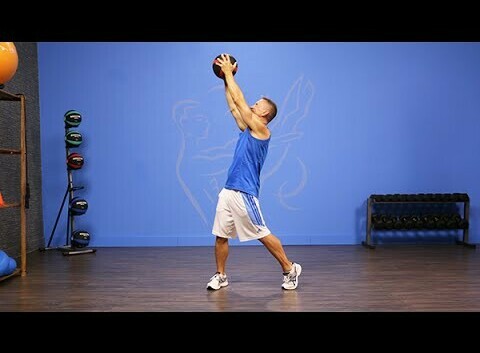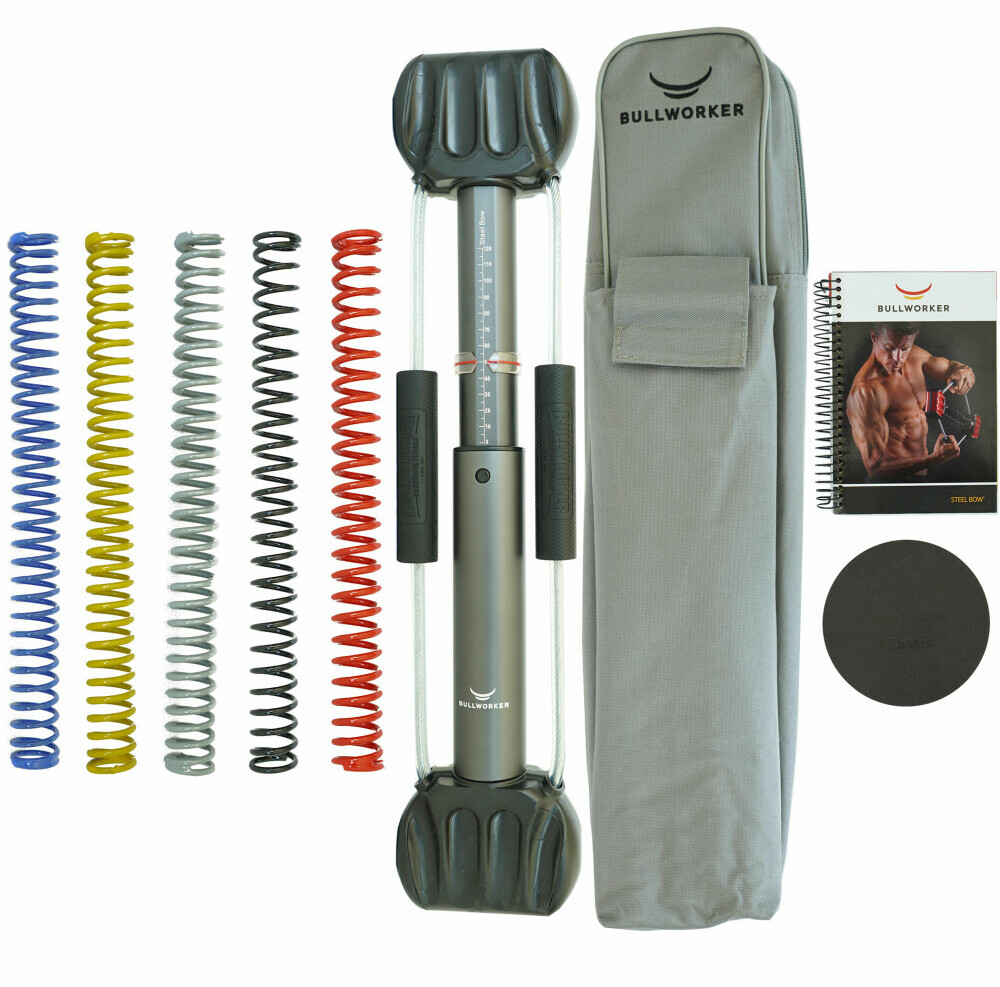THIS IS THE CORE
In my senior years, I tend to emphasize the core area in my daily workouts. I don’t do sit-ups or floor crunches any more, since my lower back is somewhat arthritic.
But I do a 15-20 minute core workout, consisting of planks, standing medicine ball exercises and seated crunches with a Bullworker Steel Bow. I primarily do workouts at home, but my core routine may be done anywhere, given appropriate equipment.
This post will present the beneficial reasons for training the core, show pictures and videos and finish with relevant equipment recommendations.
The core consists of abdominal muscles, as well as the muscles of the pelvis, lower back and hips.

HERE ARE THE BENEFITS OF WORKING THE CORE
- Improved posture. When we strengthen the core muscles, we stabilize our spine and pelvis, with better posture being the result. With good posture, strain on our back is reduced, as is back pain in general.
- Better balance. A strong core gives us a stable base for all movements – walking, running or lifting weights. This helps us avoid falls and injuries as we age.
- Better athletic performance. Stronger core muscles enable us to run, jump and throw with greater efficiency. Many athletic movements benefit.

- Enhanced functional strength. Core muscles are involved in just about any movement we make – bending, lifting and twisting as examples. We can improve our overall ability to perform routine tasks with less risk of injury.
- Improved breathing. Our diaphragms are connected to our core muscles and are the key muscles involved in breathing. By improving the function of the diaphragm, we also improve breathing patterns and respiratory efficiency.
- Better digestion. As we stimulate the abdominal muscles, we can alleviate issues such as bloating and constipation.
- Enhanced body awareness. As we train our core, we consciously stabilize those muscles. The awareness of our body’s alignment or movement patterns will help us move more efficiently and with greater control.
CORE TRAINING WITHOUT SIT-UPS OR CRUNCHES
I do the basic plank exercise, an isometric training form shown below.

This video will show 10 different versions of planks
I do standing medicine ball core movements. The first is called the wood chopper, picture shown below. The movement is from below waist to above shoulders, with a pivot to include both sides, one after the other. I do 40 reps.

I follow that with another medicine ball exercise, which is similar. I bring the medicine ball from one side to the other without the vertical movement. As I move from right to left and back, I resist the movement, which makes it more effective. I do 40 reps for this one.
My next core exercise is the seated Bullworker crunch. This video will show a version of this. But I use the shorter Steel Bow and sit on a chair instead of the floor. I do 20 reps to my right side, 20 reps to my left side and 30 reps to the middle.
I finish my core routine by doing Kegels, at least my version of Kegels. I lie down on a couch and tense my pelvic floor muscles for about 5 seconds for 40 reps. Then I follow with longer isometric holds of these muscles – 12 reps of 30 seconds.
AMAZON
I am a customer and associate of Amazon. As a customer I value their huge inventory, fast delivery and good service. As an associate, I may use their links in conjunction with my articles and benefit by commissions when the links are acted upon.
The links will show full descriptions, pricing, reviews and suggestions for other similar items.
BULLWORKER
I use the Bullworker Steel Bow, shown below, for seated crunches. Any of the five springs provide resistance for my seated crunches as I push down on the top-handle as I am sitting. I feel the crunches, whether I push down from the right, left or center. Great core exercise!
I have the Steel Bow and Bow Classic (similar but larger than the Steel Bow). These are perfect for home workouts and can be easily transported as we travel.
See my link at the side of my website. Click on the red link for full information on all Bullworker products.

FINAL THOUGHTS
It is crucial that we incorporate core training in our exercise routines. The crunches and sit- ups are still done by many and are effective. My choice is to stick with planks and standing or sitting core movements.
Of course, cardio and good nutrition work together with abdominal exercise for optimal core improvement.
The above video on planks will show several modes of training that I don’t use. All are effective. Be sure to view that video!
Please leave me any comments or questions in the “Comments” section below. Or email me, richard@myworkoutathome.com.
Let’s not be burdened by belly fat!